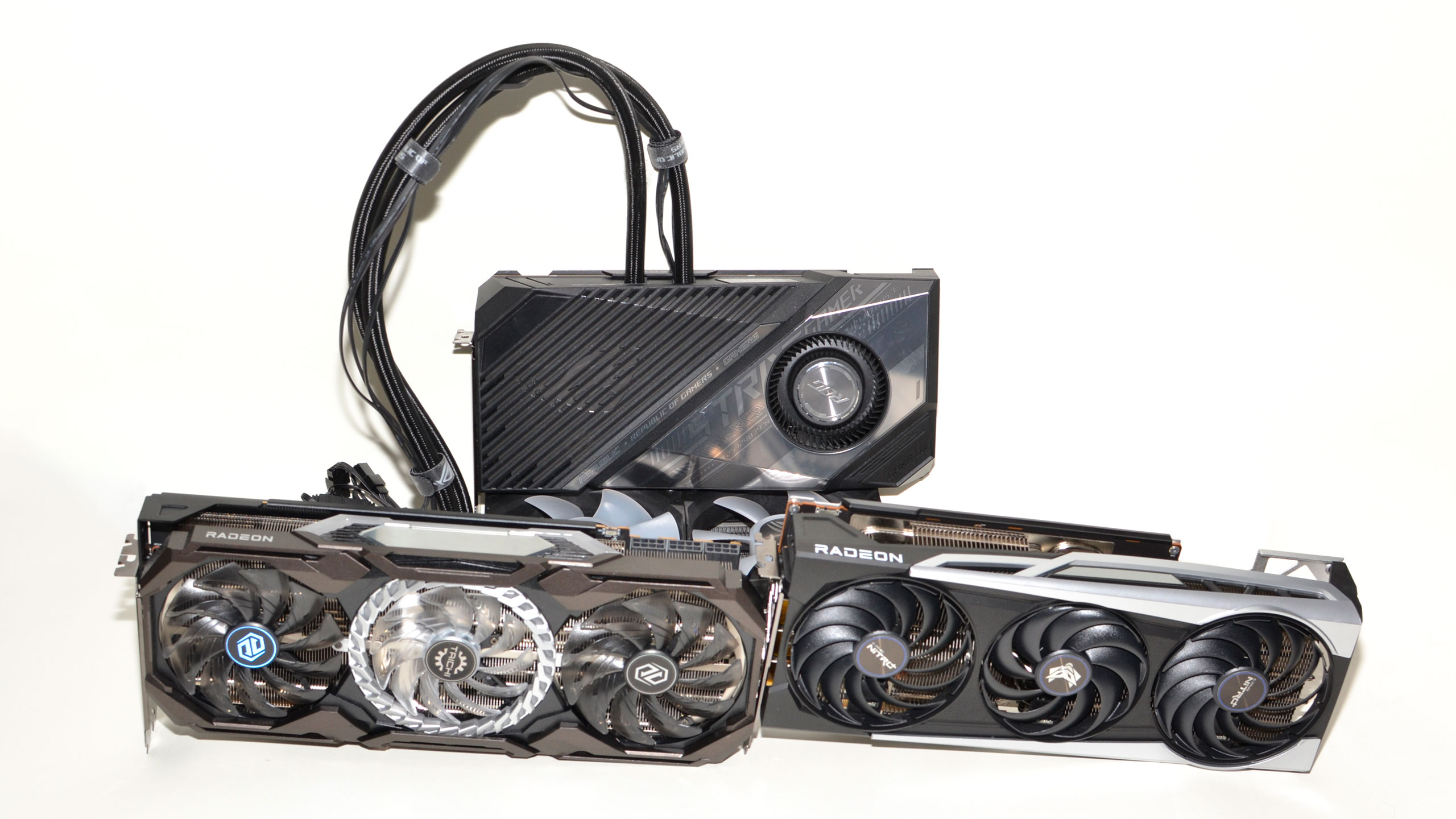AMD launched the Radeon RX 6800 XT and RX 6800 on November 23, 2020. The first of the new RDNA2 architecture graphics cards had plenty to offer, ranking near the top of our GPU benchmarks hierarchy and earning a place on our list of the best graphics cards. AMD does particularly well with games that don’t support ray tracing. In such cases, there are quite a few games where the 6800 XT leads the (theoretically) more expensive RTX 3080, though enabling ray tracing or DLSS quickly turns the tables. The biggest problem, as we’ve seen with all of the recent GPU launches, is actually finding one in stock. Now we’re looking at three third-party custom cards, from ASRock, Asus, and Sapphire, to see what they bring to the table.
The core features and RDNA2 architecture are all unchanged, so the main differences between the cards will be in clock speeds, cooler designs, and aesthetics. There are also a few third-party add-ons, in the way of software, that might sway your purchasing decision. But let’s be real: Finding any of these cards in stock can be an exercise in futility, and with the recent surge in cryptocurrency mining, it could be months before supply is anywhere close to matching demand. In other words, if you want an RX 6800 XT as soon as possible, the brand and model of card will be far less of a consideration than whatever you can actually lay your grubby little mitts on.
The good news is that performance across all of the tested RX 6800 XT cards is very close. At factory stock settings, the speediest of the cards we’ve tested is only 2-3 percent faster than the reference RX 6800 XT. Between the three custom cards, the performance deltas are even smaller, to the point of being effectively non-existent. But that doesn’t mean the cards are all equal, as the cooling designs and other elements come into play. Here’s a quick overview of the specs before we get into the individual card analysis and benchmark results.
| ASRock Taichi RX 6800 XT | Asus ROG Strix LC RX 6800 XT | Sapphire Nitro+ RX 6800 XT | Reference RX 6800 XT | |
|---|---|---|---|---|
| Architecture | Navi 21 | Navi 21 | Navi 21 | Navi 21 |
| Process Technology | TSMC N7 | TSMC N7 | TSMC N7 | TSMC N7 |
| Transistors (Billion) | 10.3 | 10.3 | 10.3 | 10.3 |
| Die size (mm^2) | 251 | 251 | 251 | 251 |
| SMs / CUs | 72 | 72 | 72 | 72 |
| GPU Cores | 4608 | 4608 | 4608 | 4608 |
| Ray Accelerators | 72 | 72 | 72 | 72 |
| Boost Clock (MHz) | 2360 | 2360 | 2360 | 2250 |
| VRAM Speed (Gbps) | 16 | 16 | 16 | 16 |
| VRAM (GB) | 16 | 16 | 16 | 16 |
| VRAM Bus Width | 256 | 256 | 256 | 256 |
| ROPs | 128 | 128 | 128 | 128 |
| TMUs | 288 | 288 | 288 | 288 |
| TFLOPS FP32 (Boost) | 21.7 | 21.7 | 21.7 | 20.7 |
| Bandwidth (GBps) | 512 | 512 | 512 | 512 |
| TDP (watts) | 350? | 350? | 350 | 300 |
| Pricing | $829 | $899 ($1,080) | $769 ($999) | $649 |
Let’s first address the elephant in the room: The pricing is either fantasy land or, in the case of actual ‘street’ pricing, egregious. Theoretically, the Sapphire Nitro+ initially launched at $769, but of course, it was sold out — just like every other GPU. Newegg currently lists it at $999, and it’s still out of stock. The Asus Strix LC is a similar story, with a launch price of $899 but a current Asus store price of $1,080, and it’s also sold out. ASRock gave a launch price of $829, but retail prices are much higher than that, and naturally, the reference AMD RX 6800 XT can’t be had for anything close to $649.
Beyond price, the only difference in specs is the TDP. Sapphire lists 350W, while Asus and ASRock don’t give any value. We put in 350W with a question mark based on our testing. All three AIB cards have the same 2360 MHz Boost Clock, which they can exceed in some cases. That’s where the cooling solutions come into play.
That’s it for the introduction. Let’s get to the individual cards, and we’ll dig into the finer points of each one, including any extra features that can help it stand out. We’re going to dispense with actual scores on these cards, mostly because they all feel like ghost launches. Yes, they technically went on sale, but both pricing and availability are so limited that we don’t know where they’ll really land. They’re all more or less equal, depending on your wants and needs.
MORE: Best Graphics Cards
MORE: Desktop GPU Performance Hierarchy Table
MORE: All Graphics Content
